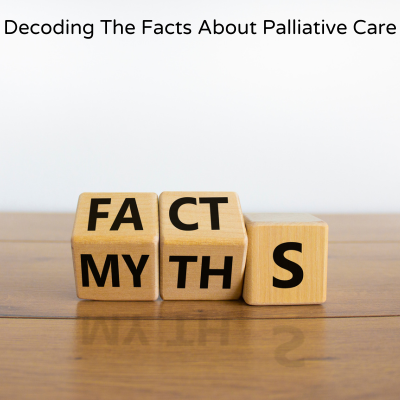Decoding the Facts About Palliative Care

How often have you heard that palliative care is meant for dying people? Or that it’s only meant to help manage pain? Or that it is only for cancer patients?
Too often, it seems.
These misconceptions about palliative care turn into barriers. They become the very reason people do not consider it an option. This is tragic, as it denies them the option of treatment and support that could significantly help improve their quality of life as they struggle with life-limiting or life-threatening illnesses like Congestive Heart Failure (CHF), respiratory conditions like Interstitial Lung Disease(ILD) or Chronic Obstructive Pulmonary Disease (COPD), kidney disease, progressive neurological diseases in addition to the different kinds of cancers. Palliative care also effectively supports those who have suffered spinal cord trauma or burns or were born with congenital anomalies.
Also read: Palliative Care: Helping people live better and happier
Palliative Care & Pain
One of the more prevalent myths about palliative care is that it only relieves pain and other physically distressing symptoms. While this is a significant aspect, it is not the only one.
To better understand it, look at palliative care as an approach rather than a one-dimensional form of treatment. It involves a combination of medical as well as psychosocial care and support. In addition to managing and controlling physical symptoms, it provides support to different aspects of the patient’s well-being that are adversely affected as a result of illness. Palliative care professionals refer to this as “Serious health-related suffering” and believe that all aspects are interconnected. We cannot address only the physical and expect overall well-being to improve. The experience of illness is complex, with every aspect of a person’s life intersecting. Palliative care recognizes this and refers to it as “total pain.”
Palliative care also believes that care and treatment are not directed “at” a patient or done “to” them. But instead, the patient and family are equal stakeholders in the decision-making process, considering their values and preferences and taking into account their capacity to not inadvertently inflict more suffering.
Also read: Palliative Care: Improving Quality of Life
Palliative Care & Families
As alluded to above, palliative care considers the whole family as the unit of care, recognizing that one person’s diagnosis greatly impacts the family. That’s why an essential part of palliative care involves offering support to caregivers. This could include emotional support, therapy, last-mile linkage to government schemes that help the family, spiritual guidance, education support for children, and assistance with practical issues, like basic food, water, and shelter by liaisoning with local authorities.
A New Way of Looking at Palliative Care
Palliative care has a lot to offer patients and their families. Getting beyond these stubborn myths and raising awareness about the true scope of palliative care is essential, so we encourage all those who could benefit from palliative care to consider it a viable part of their care plan.
Stay tuned for more mythbusters as we try to break down the misconceptions about palliative care and offer insight into its value.





